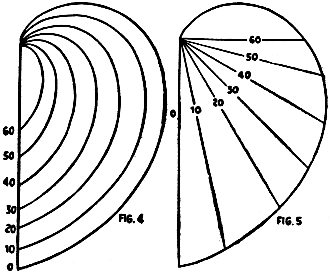|
February / March1932 Short Wave Craft
 [Table
of Contents] [Table
of Contents]
Wax nostalgic about and learn from the history of early electronics. See articles
from Short Wave Craft,
published 1930 - 1936. All copyrights hereby acknowledged.
|
This is the second
of a two-part series discussing the propagation of shortwaves, the first part having
appeared in the December 1931 / January 1932 edition of
Short Wave Craft. Keep in mind that at the time of the writing,
no instrumented sounding rockets had been sent into the upper atmosphere for empirical
measurements, so the author's conjectures being inaccurate are forgivable. Mr. Meyer's
supposition that there are "cosmically-located network of conductive lines" that
influence seasonal propagation as the earth moves through them during its revolution
around the sun is actually not an unreasonable theory for its era. It certainly
is no more outlandish than a modern-day celebrated astrophysical genius proposing
a series of vibrating 'strings' in an 11-dimensional universe.
The Propagation of Short Waves
 By Robert Meyer, of Hamburg, Germany By Robert Meyer, of Hamburg, Germany
(Conclusion)
According to this assumption, there hangs over the earth on the day side, a multiple
"umbrella," which contains besides the lines shown, all the intermediate stages.
At the same time there is a possibility of communication between any two places
on the surface of the earth, which are touched by the same line of conductivity.
The lines themselves are given continuous excitation from solar electrons.

Diagrams (Figs. 4 and 5) used by author to explain action in
short wave propagation.
In the course of a day, in view of the rotation of the earth, each point on the
surface of the earth describes a fixed path in an umbrella-like conductive structure,
and finds operating conditions periodically changing. Besides the daily revolution,
the earth annually completes a circuit about the sun; whereby there is caused a
constantly changing angular inclination of the earth's axis to the sun. This second
motion of the earth in the cosmically-located network of conductive lines (which
are therefore fixed in space) is the cause of the changes in range which occur during
annual periods.
The previous considerations dealt with the common features of the propagation
of all short-wave frequencies; and it now remains for us to consider the principles
governing the reception of the individual frequencies. From the collation of numerous
observations, we find that the reflection curves are. the same for conductive lines
of all frequencies; but that they are differently oriented in each case. If known
ranges of different frequencies, from the same point on the surface of the earth,
are collected in a diagram, there results a separation of the frequency lines according
to a uniform principle, as shown in Fig. 4. The higher the frequency, the longer
the reflection path, but the curve itself always remains the same. The only difference
is the angular position of the path; so that a "spectral" dispersion of the solar
electrons must be presupposed, analogous to the dispersion of light in a prism.
The process maintained in Fig. 4, is shown again in Fig. 5; but in such
a way that the curves are covered and the hitherto coinciding facts of (compass)
direction are different in the angular position. Now a measurement can be undertaken
on this graph and it appears that, for 15 degrees difference in direction, there
is a wavelength difference of 10 meters. The previous diagrams, which were for the
20-meter wave, can now be filled out on the basis of curves in Figs. 4 and 5 for
all frequencies.
The writer's theory therefore involves the assumption that there is, for every
short-wave frequency, a network of conductive lines, fixed in space. I imagine these
networks as being formed of spectrally dispersed solar electrons, serving as a non-resistant
conductor (i.e., one with no loss) for the corresponding transmitting frequencies.
Then the night side of the earth gives a path for a signal only if it is touched
by a conductive line formed on the day side of the earth. If there is no conductive
line, there is no possibility of communication. - Wissen und Fortschritt.
Posted January 30, 2020
(updated from original post on 8/9/2015)
|









 By Robert Meyer, of Hamburg, Germany
By Robert Meyer, of Hamburg, Germany 
